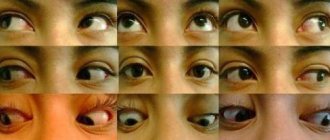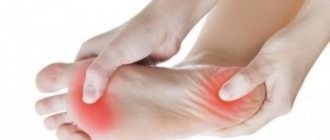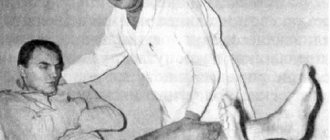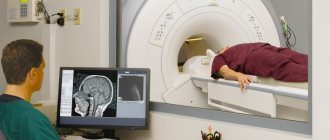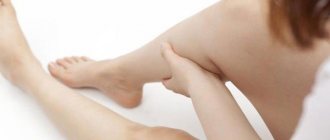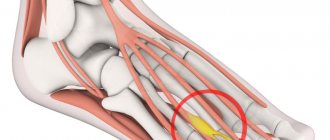Our boarding houses
Ramensky
Sheremetyevsky
How can you determine the magnitude of vibrations at home?
If the trembling of the limbs occurred as a result of a tragedy experienced, emotional, intellectual or physical overload, then no tests are necessary. The phenomenon itself will disappear after proper rest.
But if you have constant trembling, do a simple exercise before contacting a specialist. Take paper and pen. Reproduce a spiral shape on the sheet. If everything is in order, then the edges of the waves will be spherical and smooth. In another case, jagged lines indicate that it is time to get examined at the hospital.
How to treat hand tremors in old age
If you notice the consequences of the test in yourself or an elderly relative, then come to an appointment with a neurologist. Based on an examination and an accurate diagnosis, he will offer an individual treatment regimen. It may include: medications, hydrotherapy, surgery, treatment with unconventional methods (bees and leeches).
Operational event
Manipulation is carried out in rare cases when a conservative course has not brought good results. The surgical method involves inserting a graft into the thalamus of the brain. Intervention can occur in a variety of ways and includes:
- Ultrasound ablation. No intracranial access required. Directional waves are used.
- Thalamotomy. The tremor is reduced by temporarily installing a thin wire.
- Gamma knife action (exposure to radiation rays on thalamic tissue).
- Stimulation of deep structures (introduction of thin electrodes deep into the brain).
Our boarding housesGolitsyno | ||
Minsky | ||
Treatment with water when an elderly person's hands are shaking
Diet table
You need to radically change your diet. Exclude from the menu foods that are harmful to the elderly: coffee, chocolate, baked goods, pickles, marinades, smoked foods, fried foods and fast food. Try to get rid of bad habits, stop drinking alcohol and smoking cigarettes. If you are unable to cope with the problem yourself, then seek help from a narcologist. Your desk should have:
- Fermented milk products: cheese, feta cheese, sour cream, cottage cheese, fermented baked milk, kefir and yogurt.
- Rabbit, turkey and chicken meat.
- Beef liver.
- Nuts of all kinds.
- Oatmeal, pearl barley.
- Fresh vegetables and fruits.
- Non-carbonated drinks: herbal teas, dried fruit compotes, smoothies, juices, fruit drinks.
Another option is possible - fasting. But without consulting a doctor, performing such an action is strictly prohibited!
Treatment with bees and leeches if the hands of the elderly are shaking
- bloodletting can relieve the circulatory system and cleanse the blood vessels;
- installing them at biologically active points is equivalent to acupuncture;
- The secretions of the salivary glands contain valuable components that improve blood flow.
Saliva contains substances that act as thrombolytics. They dissolve blood clots, reduce blood clotting, saturate it with oxygen, and help reduce swelling. Thanks to the healing properties of bees and leeches, the immune system is stimulated, which, in turn, helps eliminate symptoms.
Treatment with drugs for tremors (shaking) of the hands: what tablets are prescribed for tremors in the limbs
The problem can be solved with the help of modern medicines. Our pharmacology produces a number of drugs that help get rid of pathology. The neurologist prescribes a course based on the patient’s age, frequency of fluctuations and time of manifestation of the disease.
Choose the care your relative needs
A person after a stroke becomes practically helpless, especially if he is elderly. Elderly people are much more difficult to tolerate this disease. Patients after a stroke need quality care and, in addition, rehabilitation, which will partially or even completely restore lost functions. Many relatives cannot cope with elderly people due to lack of time or other reasons.
Treatment of hand tremors
If a noticeable tremor is directly related to stress, this indicates its purely psychological nature.
This means there are two ways to deal with tremors. One of them gives a temporary effect - this is taking psychotropic drugs, the second gives a lasting effect - this is working with a psychologist or psychotherapist. Very often, trembling during excitement is associated with social anxiety (social phobia).
Sometimes tremors are caused by several reasons at once, for example, both your genetics and a psychological reaction to stress.
If you doubt the psychological cause of hand tremors or are sure that there is another reason along with the psychological cause, then you should go to a neurologist.
The doctor will rule out a number of diseases and reactions that cause tremors. Here are some of them:
- Response to physical activity;
- Consequences of taking alcohol and drugs;
- Reaction to drugs;
- Genetic predisposition;
- Parkinson's disease;
- Consequences of traumatic brain injury, stroke or brain tumor;
- Hyperthyroidism;
- Liver or kidney failure;
- Dystonia;
- Polyneuropathy.
However, if tremor manifests itself specifically during communication, then you should consult a psychologist, even if you have determined that the cause of the tremor is a disease, a reaction to stress, or psychoactive substances.
Trembling and shaking of hands are common signs of various ailments, such as Parkinson's disease, hepatolenticular degeneration, torsion dystonia, multiple sclerosis, liver cirrhosis, thyrotoxicosis, intoxication with drugs, metals, drugs, etc.
How to treat hand tremor, how to get rid of hand tremor if the tremors are caused by one of the above ailments? First of all, drug therapy is aimed at getting rid of the pathology that caused this disorder.
Medicines for hand tremors include anticonvulsants, such as Primidone, non-selective beta blockers (Anaprilin), carbonic anhydrase inhibitors (Diacarb). A particularly effective medicine for hand tremors is Nadolol (a beta blocker).
In addition, these diseases must be differentiated from alcoholic and essential hand tremor, since their treatment must be carried out using other methods.
Essential tremor is considered a familial tremor because it is a pathology of the nervous system that is inherited. The only symptom of this disease is trembling, which most often affects the hands, but can also affect the lower limbs, head, torso, and diaphragm.
How to treat essential hand tremors? In most cases, treatment for this form of the disease is limited to drug therapy. The beta blocker Propranolol has a good therapeutic effect. It can significantly reduce tremors, but due to a number of contraindications, it is prohibited from being prescribed to certain groups of patients.
In this case, patients may be recommended the anticonvulsant drug Clonazepam. In recent years, intramuscular injection of Botox, which affects nerve endings, has been successfully used to treat this form of tremor. In order to obtain a metabolic effect, vitamin B6 is prescribed.
In cases where conservative treatment is ineffective, surgical intervention is recommended. Implantation of a neurostimulator is indicated to stimulate deep structures. In addition, stereotactic surgery is often performed on the ventrolateral nucleus of the thalamus.
Due to chronic excessive consumption of alcoholic beverages and acute alcohol intoxication, alcoholic hand tremors can occur. Trembling and shaking of hands is an integral part of a hangover and withdrawal syndrome, which is observed in individuals with alcoholism due to the cessation of intake of alcohol-containing liquids.
Trembling is considered one of the unpleasant consequences of excessive alcohol consumption. To get rid of it forever, it is necessary to carry out comprehensive treatment for alcoholism. Self-prescription of drugs that can reduce hand shaking is not recommended, since drugs aimed at relieving tremors have a strong effect on the entire cardiovascular system. Therefore, before taking any medications, it is recommended to consult a specialist.
Treatment of tremors caused by drinking alcoholic beverages begins with eliminating the symptoms of general intoxication in the patient’s body. For this purpose, intravenous drip administration of the following drugs is prescribed: isotonic solution (saline), hepatoprotectors, glucose, vitamins, antihistamines, sedatives and sleeping pills. Medicines are prescribed that restore salt balance, metabolic processes, and acid-base balance.
After the symptoms of intoxication have been relieved, the patient is prescribed medications aimed at normalizing blood pressure, sedatives and anticonvulsants, and antidepressants. In addition, complex therapy should include the use of enzymes that help normalize the functioning of the digestive system.
Thus, hand tremors caused by alcohol intoxication should be treated together with other manifestations of alcoholism. The dosage of prescribed medications is calculated individually for each subject.
Alcoholic hand tremors can be treated at home using folk remedies. However, there are a number of reasons why self-medication is not recommended. Alcohol shaking is one of the main signs of serious dysfunction of the nervous system. Therefore, immediate treatment is indicated.
If the patient ignores the existing problem for a long time, this can provoke sad consequences, such as myocardial infarction, stroke, paralysis, etc. When there is uncontrollable trembling of the entire torso and limbs, the help of a specialist is needed. For minor manifestations of tremors, you can use traditional medicine.
For example, sage infusion helps get rid of trembling in the upper extremities. To prepare it, you need to pour ten grams of herb leaves into a glass of hot water and let it brew for nine hours. It is recommended to consume this infusion in an amount of 5 milliliters (one teaspoon) after meals. You can wash it down with tea, compote, jelly.
The following herbal infusion will also help relieve the symptoms of hand tremors and calm you down. To prepare it you will need ten grams of medicinal valerian, thirty grams each of dried herb, motherwort and heather. All of the listed ingredients should be mixed thoroughly, pour a liter of hot boiled liquid and leave in a thermos for approximately 8-10 hours. It is recommended to use 50 ml. per day.
Alcohol tremors can also be treated with relaxation therapy. In this case, baths with aromatic oils, sage or chamomile will be effective ways to relax and calm the nervous system. This procedure can only be carried out if the person is sober. In a state of hangover or with withdrawal symptoms, this procedure is strictly prohibited.
Hand tremors treatment at home. When faced with such a phenomenon as hand tremor for the first time, a person begins to worry and get nervous. This behavior can only intensify the shaking. You need to understand that trembling does not always indicate the presence of a serious illness; it can often be a consequence of hypothermia, overwork, overheating, or emotional stress.
In addition, it is recommended to temporarily stop drinking drinks containing caffeine, reduce the amount of chocolate you consume and increase the amount of fluid you drink, and completely avoid drinking alcoholic beverages and smoking.
You should also pay attention to your physical education. It is recommended to start every morning with light exercise, increase time spent in the fresh air and walk more often. It is better to replace watching TV shows that can fill you with negative emotions by reading light and pleasant fiction. You need to learn to relax and try to maintain a calm state of mind in all situations.
If periodic shaking of the upper limbs is habitual for a person, then you can try to overcome this unpleasant symptom using folk methods. Traditional medicine can be used only if there are no diseases that cause tremor. Traditional methods help with hereditary and age-related tremors caused by excessive emotionality.
As traditional medicine aimed at eliminating tremors, various soothing decoctions and infusions from dried plants such as Maryin root, motherwort, peppermint, valerian root, white willow bark, and chamomile are usually used.
Also, for physiological hand tremors, regular yoga classes, swimming, various meditation techniques, and hobbies that develop fine motor skills, such as beading, embroidery, knitting, etc., are recommended.
The feeling of nervousness and (or) internal trembling is familiar to almost every adult. These sensations are observed in healthy people during periods of stress or threat of danger. Feelings of tension and anxiety in ordinary people are always accompanied by nervousness, a feeling of internal trembling, sometimes trembling of fingers, arms, and legs.
The main reasons for the manifestation of trembling and nervousness are the presence of formed mental disorders (most often - borderline mental states, post-stress disorders, anxiety states), the presence of organic or toxic lesions of the nervous system (more often with the manifestation of various complications of alcoholism, with the manifestation of withdrawal syndrome after drinking alcohol, drugs , drug addiction, etc.). Depending on the causes, the treatment of nervousness and yeast is wiped off according to individual principles.
Modern methods for accurately diagnosing the type of tremor
At the moment, hand tremors are treated with various methods.
But, basically, these pathologies are so serious that the result does not always justify the money and effort spent.
https://www.youtube.com/watch?v=5jfpxr_bKWo
If the reasons are physiological in nature, then they must be dealt with immediately.
Otherwise, hand tremors or the underlying disease will progress, which will have a detrimental effect on human health.
- Drug therapy involves the use of serious medications, the use of which must be supervised by a doctor. The process of long-term treatment involves regular biochemical and general clinical blood tests. In order to avoid side effects and complications, an electrocardiogram is performed.
- Another way is surgical intervention. The operation is necessary in exceptional circumstances, when the hands and fingers constantly shake with a large amplitude, thereby interfering with a normal life. A person cannot change clothes, wash, cook, or move independently. Neurosurgeons perform brain surgery called stereotactic thalamotonia. The nuclei of the thalamus are destroyed under the influence of radiofrequency and ultrasound. Ineffective drug treatment is an indication for this procedure. The procedure is mostly successful, but it does not stop the progression of complications such as dementia and dysarthria.
- With the abuse of coffee, carbohydrates and fats, the symptoms of hand tremors intensify. Therefore, by starting to eat right, you can recover much faster.
- With actively expressed tremors, patients will be helped by fasting. However, you should start fasting only after consulting your doctor.
- Treatment with bees and leeches also has a positive effect. However, this method is now rarely used as it is considered outdated.
- Hydrotherapy - pouring cold water, cool showers and swimming in the pool helps to increase blood circulation.
A person whose hands are shaking should not be ashamed of this, but rather go, get diagnosed and treated under the supervision of a doctor. You may not be able to completely overcome tremors, but you can reduce the symptoms.
Be sure to read:
Pulpitis in children and adults: causes and treatment methods
During a medical examination, the doctor, first of all, determines whether tremor occurs more often during periods of rest or muscle activity. In addition, it must be specified
- vibration symmetry,
- the presence of sensitivity, weakness or muscle atrophy,
- decreased reflexes.
A detailed family history may indicate hereditary tremors. Blood and urine tests can help detect thyroid disorders and rule out other metabolic causes, such as abnormal levels of certain chemicals that may cause shaking.
In general, a number of diagnostic measures are designed to determine the type of tremor, so that the specialist then has the opportunity to navigate the causes of its occurrence. In addition, the diagnosis identifies underlying causes, such as drug interactions, chronic alcoholism, or another condition or disease.
Diagnostic imaging using computed tomography or magnetic resonance imaging can help determine whether tremors are the result of a structural defect or degeneration of the brain.
The doctor will perform a neurological examination to evaluate the functionality of certain nerves and general motor and sensory skills. These tests are designed to determine any functional limitations, such as difficulty with handwriting or the ability to hold a cup. The patient may be asked to touch the tip of the nose with a finger, draw a spiral, or perform other tasks or exercises.
Your doctor may order an electromyogram to diagnose muscle or nerve disorders. This test measures involuntary muscle activity and muscle response to nerve stimulation. In addition to studying muscle activity, tremor can be studied using precision accelerometers - special equipment that accurately calculates the correctness of a particular action.
How do you know if you have a tremor?
When the extrapyramidal system, in particular the basal ganglia, is damaged, a person experiences pathological violent movements - hyperkinesis. One of them is tremor.
So, tremor (or in other words, trembling) is spontaneous vibrations of a separate part of the body (arms, legs, head, tongue, eyelids, etc.) or the whole body, arising as a result of uncontrolled contraction of muscle fibers.
There are rest tremor, which appears in the muscles in a state of inactivity, and action tremor (action tremor), which accompanies voluntary muscle contraction. The second includes postural (postural tremor) and kinetic.
Postural tremor occurs when trying to maintain a certain position (trembling hands in the Romberg position, etc.). Kinetic tremor, accordingly, manifests itself when performing any movement and intensifies while approaching a given goal. An example is intention tremor.
Psychological factors leading to hand tremors in the elderly
Emotional people are more likely to experience this phenomenon. During the experience of fear or fear, grief, or anger, convulsive trembling of the limbs occurs. In addition, it can begin from excessive physical labor, hypothermia, or sun or heatstroke.
There are several other causes of tremor:
- Depressive state. Then you just need to undergo a rehabilitation course with a psychiatrist. He will prescribe antidepressants, which in a month will already give a positive result. A person’s mood improves, anxiety disappears and self-confidence appears.
- Taking some medications may cause side effects.
- Abuse of alcohol, cigarettes, drugs and coffee.
- Intoxication of the body due to poisoning with carbon monoxide, heavy metals and toxic objects.
Select a service for your relative | |||
| Caring for bedridden people | Disability care | Elderly care | Care after a heart attack |
Why do my hands shake when excited?
- Contact a psychologist or psychotherapist
Psychotherapy is the most reliable way to cope with tremors caused by anxiety. Psychotherapy may require a certain investment of time and money, but the results are stable.
- See a psychiatrist
Psychotherapy does not give immediate results. Therefore, if you need to quickly cope with tremor, you should consult a psychiatrist for medications. When taking medications, hand tremors during anxiety decrease or disappear, but only while taking the medications.
- Contact a neurologist
If you are not sure about the purely psychological nature of tremors, then you should make an appointment with a neurologist to rule out other causes of hand tremors during excitement.
- Find appropriate self-help methods
You can read about self-help methods at the end of the article.
Containment
The human body reacts in certain ways to stressful events. First, the brain and adrenal glands produce stress hormones. Hormones prepare a person for active physical action, and for this purpose the pulse quickens, the muscles become toned, the pressure rises, and the breathing rate increases. This is the so-called “fight or flight” reaction, which previously helped ancient man to be stronger, faster and more agile, and therefore helped him to survive.
If a person is forced to remain motionless during the release of hormones, tension grows inside him. It is this internal tension that manifests itself in the form of trembling. Suppression takes a colossal amount of energy. Holding back the trembling leads to increased tension, which means an increase in tremors.
Trembling is more pronounced in those people whose bodies react more strongly to stress. And also for those who are not used to being emotional, but strive to be restrained and rational.
Focusing
It turns out that there is such a rule: if you focus your attention on any part of the body, this leads to changes in how it works. You can conduct this experiment yourself.
Go to a quiet, peaceful place. Sit comfortably. Direct your inner gaze to the big toe of your left foot. Feel how your thumb touches your index finger as it touches the floor. If you are wearing shoes, feel them with your finger. Listen to the sensations in your finger - whether it is warm or cold, whether it is relaxed or tense, whether it is comfortable in the shoe.
Focusing on the sensations in the hands and thoughts about trembling leads to increased tremors. Therefore, in stressful situations, transfer your attention to other things.
Fear of making a bad impression
With the fear of not being liked, a person feels like a small child. It seems that only those around you know what is good and what is bad. It’s as if there are all judges and prosecutors around. In fact, the toughest accuser is on the inside. As practice shows, people think only about themselves and rarely notice others.
In psychotherapy, you can quiet the voice of your inner critic.
Vicious circle
The thought that other people will notice the trembling makes it worse. A vicious circle is formed in which this thought causes fear of making a bad impression, which leads to the release of stress hormones. Hormones trigger the body's response to stress. When the fight or flight response is suppressed, tremors occur.
False Self
As a rule, trembling is characteristic of those people whose parents and educators achieved ideal obedience (complete inhibition of natural reactions) in a variety of ways. Some were scolded in childhood, others were beaten, others were condemned or showered with contempt, and others were stopped from speaking as punishment.
Particularly severe trembling is characteristic of people with a stormy temperament, when they hide their strength and activity. Their irrepressible energy bursts out trembling.
Psychotherapy helps to identify and neutralize the psychological mechanisms of trembling.
Tremor symptoms
To find out the symptoms of tremor, it is necessary to define tremor, what it is and its forms.
As was written above, trembling is most often a symptom of an illness, and not a separate disorder. It manifests itself in the form of involuntary rhythmic muscle contractions. There are two main types of this condition: pathological trembling and physiological. The first occurs as a result of serious dysfunctions of certain parts of the nervous system.
Pathological tremor is one of the symptoms of the disease. The second is a slight shaking that occurs under certain conditions in the outstretched upper limbs. This condition usually goes away quite quickly after the cause is eliminated. Such reasons include: excessive physical activity, various stress factors, use of certain medications, etc.
Tremor during excitement is considered one of the types of physiological tremors. The appearance of involuntary muscle contraction during excitement is a fairly common phenomenon that can manifest itself in different ways. Most often it occurs as a result of a stressful situation or depression. Trembling with excitement is manifested by twitching of the hands and fingers, head, limbs or larynx. This type of trembling during excitement is just the body’s response to anxiety, excitement and usually goes away on its own.
If trembling is observed for several weeks, if it is not associated with taking medications, physical activity, stress, or excessive alcohol consumption, then there is a possibility that muscle contractions are caused by serious pathologies in the functioning of the body.
You can also classify trembling according to its prevalence - local and generalized trembling. The first is observed in certain areas of the body (tongue, head, limbs). Generalized muscle contraction is distributed evenly throughout the body.
Based on amplitude, tremors can be divided into the following forms: small-sweep and large-sweep.
Based on the characteristics of the manifestation of tremor, static and dynamic forms can be classified. The first form is a resting tremor, since this form is observed and most manifested in an unstrained muscle. The second form is action tremors, which manifests itself or intensifies during active movements. It, in turn, can be postural, intentional, or contractive.
Contraction tremor occurs or is aggravated when the muscle is held in a contracted state (for example, clenching the fingers into a fist for a long time).
Body tremor often occurs with abuse of alcohol-containing drinks or chronic alcoholism and is called alcoholic. The described type of trembling is manifested by “shaking” of the spread fingers, often spreading to the head or torso of the individual. This symptom is more often observed in patients in the morning and goes away after the next consumption of alcohol-containing liquids. The same situation is observed in drug-dependent individuals with withdrawal syndrome.
When using drugs or taking certain medications incorrectly, irregular small-scale trembling is observed in the fingers or hands. To eliminate this symptom, you must stop taking the drug.
Postural tremor is characteristic mainly of people suffering from autonomic dysfunction, excessively anxious and suspicious individuals. This form of the disease can be a consequence of pathologies of the thyroid gland, taking a number of drugs and alcoholic beverages, and may also have hereditary roots. This form of tremor is caused by withdrawal symptoms, chemical poisoning.
Postural tremor is small-scale and more pronounced when the arms are extended and the fingers are spread out. It intensifies when trying to concentrate, when the individual tries to reduce trembling, and does not disappear when moving.
Intentional oscillation occurs due to damage to the brain stem or cerebellum. With this form of trembling, large-scale muscle contractions are noted, which are absent at rest, but occur during purposeful movements, especially when achieving a goal. The patient, standing in a standing position with his eyes closed, arms straight and outstretched, is unable to touch his nose.
This form of trembling can be caused by tumor processes in the body, trauma, Konovalov-Wilson disease, vascular diseases, multiple sclerosis.
Tremor of the hand muscles, caused by lesions of the cerebellum, pathologies of the structures of the subcortex and brain stem, is characterized by constantness.
The most dangerous type of involuntary muscle vibrations is asterixis. Its distinctive feature is its sweep, arrhythmia, and asymmetry of contractions. The shaking resembles the flapping of wings. This form is observed exclusively with voluntary muscle tension.
The described type of trembling is caused by a periodic paroxysmal decrease in the tone of the muscles responsible for maintaining a certain posture. That is why outwardly asterixis resembles a non-rhythmic, flapping trembling that appears when the hand is extended and the arm is straightened. A few seconds after straightening the arm, sharp tremors are observed, followed by an immediate return to its previous position. Similar twitching is detected during tonic tension of other muscles.
You can often observe bilateral asterixis, which appears against the background of a darkened consciousness. This is the main symptom of metabolic encephalopathy. Unilateral asterixis often occurs with a stroke.
Rhythmic myoclonus is characterized by widespread trembling of the entire body, which intensifies with muscle tension (during movement) and completely disappears with muscle relaxation. This form of tremors often accompanies the following ailments: various pathologies of the brain and vascular diseases, Wilson's disease, multiple sclerosis.
Parkinsonian tremor is a consequence of damage to the subcortical areas of the brain. Parkinson's disease is characterized by trembling at rest, which disappears or significantly decreases with the onset of activity.
Parkinsonian muscle tremor is often asymmetrical. This manifests itself in unequal intensity of shaking, for example, the left hand shakes more than the right. In this case, the oscillation decreases or completely disappears if the individual tries to perform a spontaneous action with this hand. With parkinsonism, movements are noticeably slower, but distinct.
Hereditary predisposition causes familial tremor, or as it is also called essential tremor. Most often it is observed in elderly individuals, less often in children. This type of trembling most often appears when trying to maintain a certain position. Essential tremor is characterized by fluctuations of small or medium amplitude with unchanged muscle tone.
Essential tremor is considered the most common form of the disease in question. It often occurs in several family members. It manifests itself as trembling when performing any actions. In other words, tremor occurs when muscles tense and arms move. In twenty-five percent of cases, involuntary muscle contractions may be accompanied by a mild degree of torticollis, writing impairment (writer's cramp), a slight increase in the tone of the arm muscles, which never worsens to the level of rigidity characteristic of a number of diseases, for example, Parkinson's disease.
Familial tremor is considered one of the most common hereditary diseases of the nervous system.
Essential tremor is more pronounced during sleep. In addition, its manifestations are aggravated when the individual increases physical activity on the upper extremities, for example, when writing or buttoning up buttons. That is, with fine motor skills. This often leads to difficulty performing everyday tasks over time.
The intensity of essential tremor can be increased by drinking alcohol or emotional stress. In addition, familial tremor can often be accompanied by other neurological pathologies that cause other forms of tremor.
Rubral or midbrain tremor is observed with dysfunction of the midbrain due to a stroke, craniocerebral damage, less often, with a demyelinating or tumor process in the brain. It is characterized by a combination of the following forms of tremor: tremor in a state of muscle relaxation, postural tremor and pronounced intentional vibration. This form of tremor is found in the extremities opposite the area of midbrain damage.
One of the variations of psychogenic movement pathologies is psychogenic tremor. Clinical criteria for this form of tremor include sudden onset, wave-like or static, non-progressive course. In addition, psychogenic twitching is characterized by the presence of spontaneous remissions or remissions caused by psychotherapeutic treatment, the complexity of manifestations of muscle contractions (all main forms of tremor can be observed to an equal degree of severity), and the effectiveness of placebo.
The course of the disease in question of any form is aggravated by the abuse of drinks containing caffeine, alcohol-containing liquids, mental overstrain, thyroid dysfunction, and the transition period.
Rhythmic vibrations of body parts that are visible to the naked eye.
This may be, for example, trembling of outstretched arms, twitching of legs.
Due to its prevalence, diagnosing tremor does not cause difficulties for doctors. In some difficult-to-diagnose cases, rapid (high-speed) shooting or a thermograph (a device that records shaking in three planes) is prescribed.
Diagnostics
Diagnosis of this pathology is aimed at identifying the causes of tremor. For this purpose, the following examination methods are used:
- competent collection of anamnesis of life and illness, neurological examination - in most cases, already when communicating with the patient, the doctor can judge what caused the appearance of tremor (traumatic brain injury, stroke, hereditary disease, intoxication, etc.);
- laboratory examination - used to identify metabolic and hormonal causes of tremor and includes determination of the level of TSH, T4, parathyroid hormone, concentrations of liver and kidney markers in the blood, blood sugar levels, ceruloplasmin, copper in the blood and urine;
- examination by an ophthalmologist - to exclude or confirm hepatolenticular degeneration: Kayser-Fleischer ring, as a result of copper deposition in the cornea;
- electromyography – confirmation of the polyneuropathy that caused the tremor, and also gives an idea of the rhythm of the tremor;
- tremorography - study of trembling frequency;
- A CT or MRI scan of the brain can identify causes of tremor such as stroke, tumor, brain injury, atrophic and degenerative processes in the brain.
Sometimes one person can experience several types of tremor at the same time, which makes diagnosis much more difficult. Therefore, it is necessary to perform all studies prescribed by the neurologist. Only then will he have a complete picture of the disease, which will allow him to choose the right treatment.
Features of hand tremor in children and adolescents
The development of tremor in children is poorly understood. A variety of genetic conditions associated with shivering, including spinal muscular atrophy, mitochondrial diseases, and Huntington's disease, are responsible for the symptom of shakiness.
Brain tumors, hydrocephalus, nutritional deficiencies such as vitamin B12, heavy metal or drug poisoning, carboxylase deficiency, and homocystinuria can also cause shaking in children. Childhood tremor is a potentially serious condition and the child should be seen by a neurologist immediately. In-depth research into the cause of childhood tremors will help determine its cause.
Trembling is an ancient means of communication
There is an opinion among psychologists that trembling is an ancient adaptive mechanism.
Imagine a clan of ancient people. To survive in harsh conditions, they need to stick together. After all, alone there is little chance of building a reliable shelter, getting food for yourself and driving away large predators. In order for a group of people to stick together, excitement and aggression must be controlled. We need clear signals that will make it clear what is happening to a member of the community.
For example, two men stand opposite each other, and each wants to become a leader. The fact that their hands are shaking with excitement informs everyone around them that men are extremely excited, they can barely contain themselves and their energy is about to splash out. This is a signal to others to “Move away!”
Each man mentally evaluates his strength and the strength of his opponent. One of them feels that he is stronger. Because of this, he perceives his trembling as aggression ready to manifest itself, he scares the opponent with his roar, he is preparing to fight. The other man is not sure of victory, so he perceives his trembling as a manifestation of fear, he will prefer not to get involved in a fight and will move away. Thanks to trembling, it was possible to avoid direct clashes and bloodshed.
Animals also have similar bodily signals; for example, cats’ tails twitch in stressful situations.
Complications of tremor
The main complication of this pathology is a sharp decrease in the socialization of patients. A person often loses his favorite job, and his social circle becomes narrower. In most cases, with emotional stress, the tremor intensifies, so patients avoid new acquaintances and become withdrawn.
Do not forget that many diseases (Parkinson's disease, cerebellar ataxia, hepatolenticular degeneration), the symptom of which is tremor, ultimately lead to disability.
In order to avoid complications, complex treatment is necessary using not only drug therapy, but also
physiotherapy
, psychotherapy.
Disease in newborns
If the tremor does not go away for a long time or you see that it causes discomfort, then it makes sense to consult a doctor, since innocent twitching may be a sign of one of the following diseases:
- Encephalopathy of ischemic nature;
- Sepsis;
- Brain hemorrhage
- Critical decrease in calcium levels (hypocalcemia);
- deficiency (hypomagnesemia);
- Hyperglycemia;
- Jumps in intracranial pressure;
- Withdrawal syndrome.
Causes
Since we have already seen a number of diseases of which muscle twitching , let's look at a wider range of reasons that can cause such a process.
These can be either serious pathologies or a banal lack of vitamins and microelements. But in any case, you need to be alert and still contact a specialist.
- Immaturity of the nervous system. A child who was born a few days or even weeks ago has an incompletely formed nervous system. Not all processes are established, which is why nerve impulses may not be perceived correctly by the central nervous system. Up to a certain age, such work of the central nervous system is understandable and normal.
It is impossible to say exactly when the formation of the nervous system should be completed. These indicators are individual.
- Hypoxia. During pregnancy, there is a risk of impaired placental circulation in the mother, which can lead to oxygen starvation of the fetus. After birth, such children may have delays in physical or mental development. Hypoxia can also be caused by an infectious disease suffered by the mother during pregnancy, or decreased uterine tone.
- Natural injuries can also compress nerve endings, slowing blood flow to the brain.
- Premature birth. Premature babies often experience tremors, and all because of the incomplete formation of the central nervous system. If the newborn does not have additional problems, the tremor soon goes away and leaves no consequences.
How to deal with tremors on your own?
To get rid of hand tremors during anxiety, it is best to seek psychotherapy. But, if you don’t find such an opportunity yet, try following the following tips.
- Reduce overall stress
To reduce overall tension, massage, yoga or Pilates classes, walks in the fresh air and swimming are suitable. You should get enough sleep, rest a lot and pamper yourself.
A lot of coffee, a lot of work, watching horror films and thrillers usually increase stress. Strive to resolve chronic conflicts and do not take on increased responsibilities.
Over-the-counter anti-anxiety medications can help reduce overall stress.
- Master relaxation techniques
You can learn breathing techniques: diaphragmatic breathing, breathing for relaxation.
Learn progressive muscle relaxation techniques.
Practice autogenic training techniques.
Learn visualization and meditation techniques.
- Burn off the adrenaline
Trembling occurs when stress hormones are released. They are needed so that a person gets a lot of energy - he can run fast and fight harder. You can “work out” adrenaline by walking briskly, climbing stairs, or squatting.
Or you can endure it, wait for the hormones to wear off. If you don’t overwhelm yourself with fears, then adrenaline is produced in 2-3 minutes.
- Hot water
To stop trembling, soak your hands in moderately hot water for 2-3 minutes.
- Hand exercises
Hand exercises reduce tension in them. It is done in 4 stages. Very tightly, to the point of a pre-convulsive state, clench your hands into a fist for 5 seconds. Relieve tension and observe how the feeling in your hands changes and how they relax. Then spread your fingers as far as possible for 5 seconds. Then release the tension and again observe how the sensations change. Repeat this cycle three to five times.
- Exercise "Umbrella"
This exercise helps you stay calm when you are the center of attention, such as when speaking in public.
Imagine that you are holding a huge umbrella in your hands. This umbrella covers everyone present. Hold this umbrella confidently and firmly throughout your performance.
- Ignore tremors
If you are afraid that people will notice the trembling, this increases it. So let your hands shake. In fact, not in all cases will people see your hands shaking, even if the shaking seems obvious to you. Remember! People are usually busy with themselves. And come to terms with the fact that they can see the tremors.
- Increase trembling
Try to make your hands shake in the presence of observers. First, choose people who are safe for you, such as friends. Tell them: “Look how my hands are shaking!” Listen to what they say. Then do this exercise with people who are more distant from you, such as colleagues. Listen to them.
If self-help methods do not help you completely cope with tremors, consult a psychologist for psychotherapy.
Causes of the disease
Any healthy or sick person can experience short-term or long-term tremor of the upper and lower extremities, so it all depends on the reasons that provoke it.
Tremors can occur after emotional stress, as well as due to hereditary predisposition.
The causes of limb tremor vary and depend on the cause that caused it:
Every person has physiological tremor Tremor of the limbs can be observed with overproduction of medications containing a number of certain components, as well as with any emotional stress. When a person sleeps, as a rule, the tremor disappears. Trembling occurs due to:
- anxiety;
- fatigue;
- hypothermia;
- poisoning with alcohol or harmful substances;
- thyrotoxicosis;
- pheochromocytoma.
Parkinsonian tremor manifests itself in different ways in patients. Happens due to:
- Parkinson's disease;
- multiple system atrophy;
- diseases manifested by Parkinsonism syndrome.
Essential tremor has a hereditary basis and occurs due to a gene mutation. Most often it occurs in adolescence and is localized in the muscles of the upper extremities.
Cerebellar (intention) tremor occurs due to dysfunction of the cerebellum. Reasons for its appearance:
- brain stem lesions;
- after head injuries.
The cause of rubral tremor is a consequence of a stroke or the thalamus.
Dystonic tremor occurs due to focal or generalized dystonia or heredity.
Neuropathic tremor occurs due to:
- hereditary motor-sensory neuropathy;
- various neurological abnormalities;
- uremic, diabetic polyneuropathy.
Tremors occur even in infants, and not in all cases this indicates some serious abnormalities.
For example, chin tremor is associated with an incompletely formed nervous system. In rare cases, muscle tremors in a child indicate increased intracranial pressure.
Is there a way to prevent tremor?
Unfortunately, for some types of tremors that are caused by hereditary diseases, there is no prevention. It is only possible to reduce the risk of complications of this pathology.
So, what is the prevention of this unpleasant symptom:
- compliance with all instructions and recommendations of the attending physician;
- do not abuse alcohol, coffee, psychostimulants;
- long-term use of any medications should be under the constant supervision of a doctor;
- moderate physical activity (tennis, swimming, running, etc.);
- proper nutrition;
- stress management;
- work and rest schedule (continuous sleep of at least 6 - 7 hours a day).
Following these simple rules will help reduce the risk of tremor and its complications.
Graduated from Lugansk State Medical University (Ukraine) with a degree in general medicine. During her internship in neurology, she defended her master’s thesis on the topic: “CLINICAL AND DIAGNOSTIC FEATURES OF VESTIBULAR DISORDERS IN VICTIMS IN THE LATE PERIOD OF MILD CRANIOUS BRAIN INJURY.” Currently I work at the Lugansk City Multidisciplinary Hospital No. 4, neurology department.
If you liked the article, share it with your friends!
Parkinson's disease
All of the above types of tremor are observed relatively rarely. But Parkinson's disease, the main symptom of which is usually tremor, is a common disease, especially in older people (the average age of patients is 60 years). Parkinson's disease usually develops gradually, and tremors are usually the first sign. But there are cases when it is absent or slightly expressed. Parkinson's disease causes disability more often than other diseases; it is incurable, but modern medicine can greatly slow down its development. The effectiveness of treatment directly depends on the stage of the disease, so if tremor appears, you should immediately seek medical help.
Causes of hand trembling during excitement
Experts carefully study the nature of this unpleasant phenomenon and identify several reasons that lead to hand tremors during excitement. This:
- Non-pathological causes;
- Excess of stimulants;
- Consequence of taking medications;
- Other reasons.
So why do hands tremble when excited if a person is physically healthy? Non-pathological, and therefore physiological, causes include hand tremors caused by excessive anxiety, physical exertion, and hypothermia. Such a tremor is not dangerous; it quickly passes when the situation that provoked such a reaction of the body to external influence is eliminated. Almost all people are susceptible to this type of tremor, since we all react to certain stressful situations.
Igor Petrovich, neurologist, Togliatti. “You can’t be lenient about tremor. With frequent manifestations, it is dangerous and can be the result of serious disorders of the brain. If cases of hand tremors are repeated frequently, it is necessary to be examined by a doctor and should not be delayed.”
Often with stimulant abuse
tremor of the limbs, neck, and head occurs. It is dangerous because cerebral vascular spasm, which is the main cause of trembling limbs, is caused by chemical exposure, and not by experiences. In addition to the brain itself, the entire digestive and circulatory system suffers.
In order to get rid of the tremor caused by this influence, it is necessary not only to abandon the stimulant, but to cleanse the body. Bring blood counts and blood pressure back to normal.
For some complex diseases, the doctor is forced to prescribe medications that can cause a malfunction of the brain. Such side effects are inevitable when the patient's life is at stake. As a result, victory in a fight - life or death - is won by a person. And this is the main thing. In such cases, it is necessary to follow the doctor’s instructions, then the tremor will have minimal manifestation and will not cause much discomfort to the patient.
Due to the fact that at a respectable age people already have rather frayed nerves, the slightest experience leads to severe trembling. The phrase “don’t be nervous” is clearly not enough in this case.
Good rest, healthy sleep, protection from stress, and balanced nutrition help.
Other causes of tremors in older people are liver and kidney diseases, medications, and high blood pressure. As a rule, older people take care of their health independently (unlike young people) and take medications regularly.
Hunger and some diseases (diabetes mellitus) can provoke tremors. In such cases, it is enough to normalize the diet and the problem will be solved.
Essential tremor cause:
- Hereditary (manifests itself in adulthood and increases with the aging of the body.
- There may be tremor (larynx, lower jaw, head).
- It manifests itself as gradual symptoms (trembling of one hand, then spreading to other parts of the body and to both hands, even nodding movements appear).
- The main difference is that Parkinson's trembling intensifies when you move (it does not threaten your health, does not require treatment, only for obvious reasons).
Essential tremor, prevention:
- Live a healthy life.
- Avoid alcohol, caffeine, and cigarettes.
- Avoid stress.
Treatment of essential tremor:
- Take non-selective adrenergic blockers (anaprilin).
- Benzodiazepine medications (clonazepam).
- Anticonvulsant medications (primidone, hexamidine).
- Topiromats (Topomax).
- Tranquilizers.
- Botox injections.
Progression of essential tremor treatment:
A microstimulation procedure of the thalamus (brain) is performed:
- An electrode is inserted into the thalamus and connected to an implanted stimulator in the patient’s chest area.
- It removes all signals that arise in the brain that provoke tremor.


